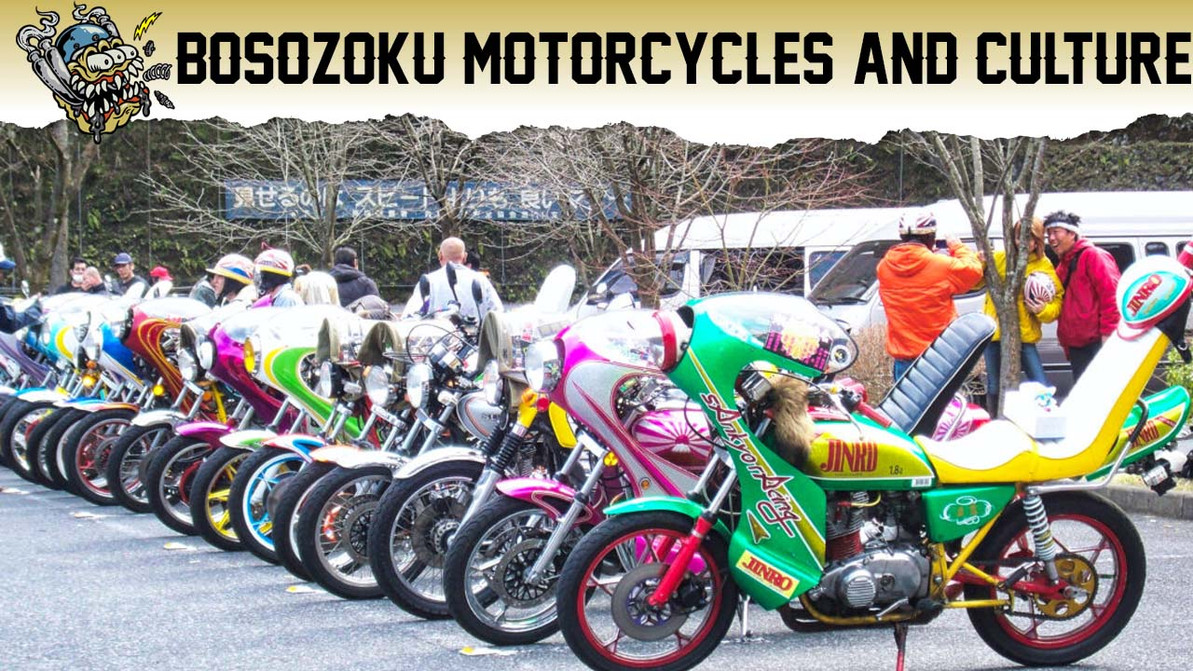Bosozoku Motorcycles & Culture
Japanese Bōsōzoku: A Prominent Rebellion Within Japanese Culture
Image Source: tuningblog.eu
Image Source: tofugu.com
Outlaws. Riffraffs. Troublemakers. Anarchists. Delinquents. Adrenaline-junkies. Rockabillies. Gangsters. Bikers. Outcasts. Veterans. Feminists. Rebels. Girl bosses. Criminals. Speed demons.
These are just a few characters you might have found in the Japanese Bōsōzoku biker groups. Some self-identified with these labels and others were given these labels by society members of varying perspectives (cops, pedestrians, Catholics, grandmothers, etc.). It's subjective; it's all relative. One thing is for sure: Bōsōzoku forever influenced mainstream Japanese culture.
But, who were they, really?
The Origin Story
Image Source: tvtropes.org
Image Source: pinimg.com
Though the Bōsōzoku group is mostly a thing of the past, there are still a few thousand members. It was last reported that there were 7000 members in 2012, though in a steady, sharp decline since its peak membership in the early 1980s (42,510 members in 1982). The biker gang was forged in the 1950s and started by young returning World War II veterans - many of which were kamikaze pilots.
They were often marginalized people, deeply lost after the war, in need of an outlet and place of belonging. Bōsōzoku became a community, a hobby, and a movement all at once.
The motorcycle gang was named Bōsōzoku, which translates to "violent speed tribe" and sometimes nicknamed Kaminari Zoku, meaning "thunder tribe", both referring to their noisy and recklessly fast motorcycle riding. They quickly became associated with deviant counterculture and niche motorcycle culture.
Esthetic
Image Source: steeltowngarage.com
Bōsōzoku members were collectively influenced by biker/chopper and greaser culture of the 1950s-80s. The men wore big slicked hair, sunglasses, the swag. They also accessorized with masks, patches, Tasuki sashes, and bandage wrappings around their waist. They wore leather jackets, jumpsuits, military gear, and tokkō-fuku (attack clothing).
There were women bōsōzoku, though they were segregated from the men and usually referred to more generally as Sukeban ("girl boss/delinquent"). They often wore hyperfeminine outfits, school uniforms (short pleated skirts, blouses, etc), masks, big hair, bats & swords, and bright neon colors or pastels.
The motorcycles of Bōsōzoku members were heavily modified and customized. They were altered for power and flair, large handlebars, bright paint jobs, large fairings, "King and Queen" style seats, and new (louder) mufflers. Paint features like flames, kanji slogans, or the 'rising sun' logo along the sides. Each bike was as unique and dramatic as its owner. Most of these mods were illegal.
Reputation
Image Source: japantimes.co.jp
Members gained a reputation for being tough and devious, often rioting, leading police chases, vandalizing, stealing, speeding, and causing mischief.
Many speculate whether they were a gang or not, and by definition, they technically were. They were organized, branded with symbology & uniforms, and even had fees & memberships. There were consistent rules and punishments, and they were sometimes affiliated with the Yakuza. Mainly, though, they were just showboats.
Bōsōzoku Girls
Image Source: themotolady.com
Image Source: messynessychic.com
Girls often formed their own subdivisions of street gangs, displaced by the men. These gangs were fundamentally similar to the original movement while offering a unique perspective. The women would use their branding (bike designs, clothing, symbols, and behavior) to speak about systemic injustices, destigmatization, femininity, sexism, and society as a whole. Their protests and messages were often veiled in destruction and violence, though still potent and confrontational.
They were an anarchic phenomenon sweeping the country, especially in the 60s, and they were not to be messed with. They broke gender stereotypes, brought on change & accountability, and flirted with the irony and satire of the expectations that came with being a woman in Japan in the 20th century.
So who were the defiant men and women of the Bōsōzoku biker gangs?
They were revolutionaries, of course.
To immerse yourself in Bosozoku even more, check out this video from Vice.Com!
Recent Posts
-
Party At The Pen East - Photo Dump 2025
The Party at the Pen Show isn’t your typical motorcycle event. Hosted inside the walls …7th Oct 2025 -
Rider Spotlight: Keith Parlee’s 2024 Road Glide
At Deadbeat Customs, we’re always stoked to highlight riders who live and breathe the custom …19th Sep 2025 -
Shark Demon Lowrider ST Headlight Install
Upgrade your Harley-Davidson Low Rider ST or El Diablo with the Custom Dynamics Shark Demon LED …15th Sep 2025




